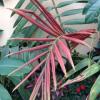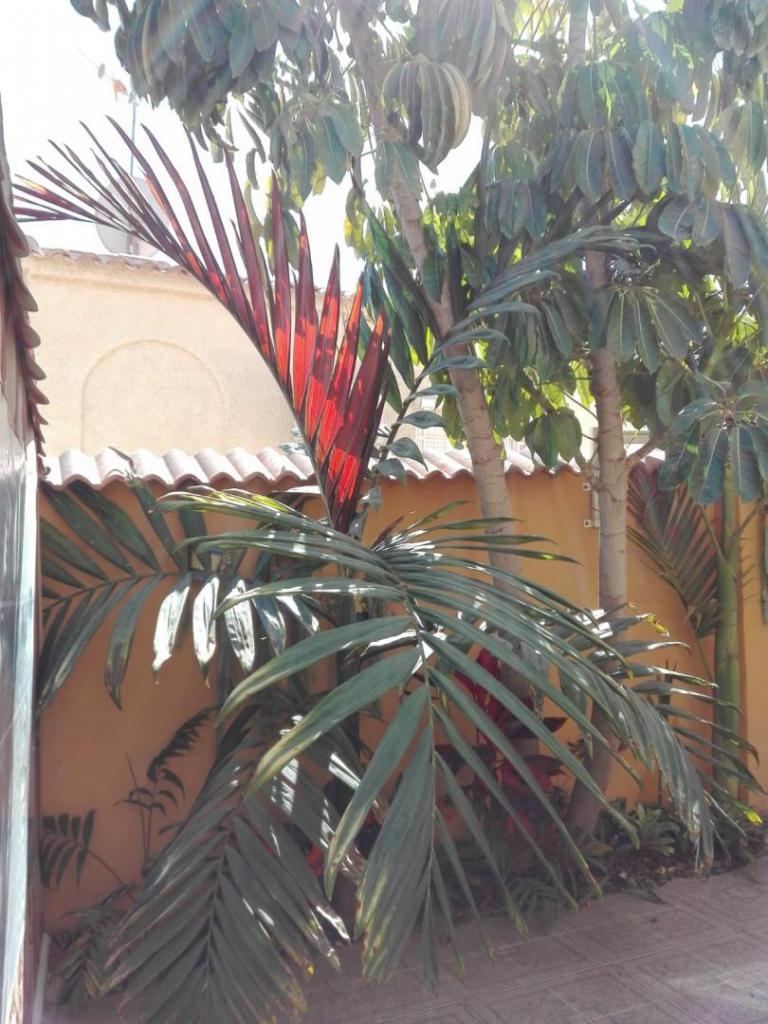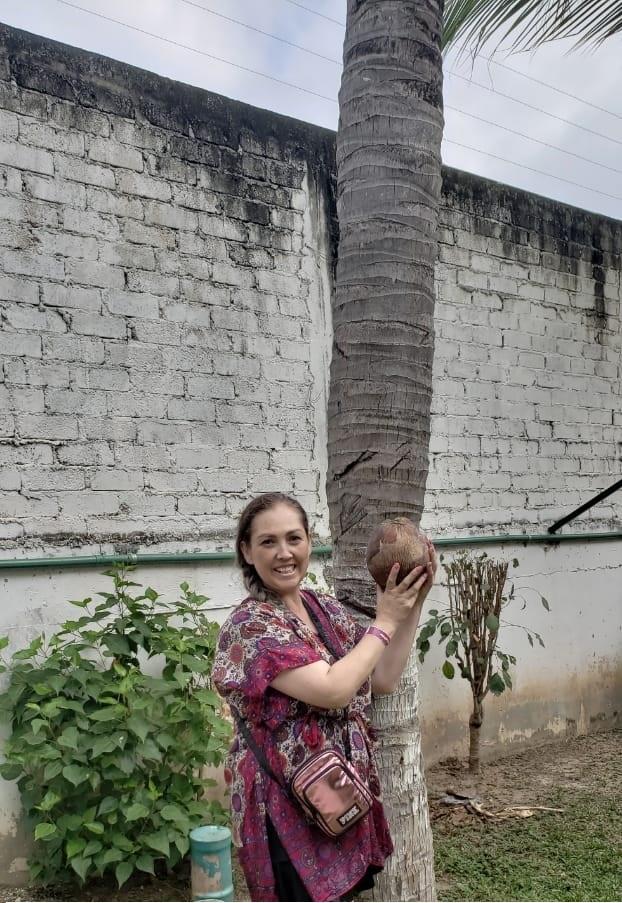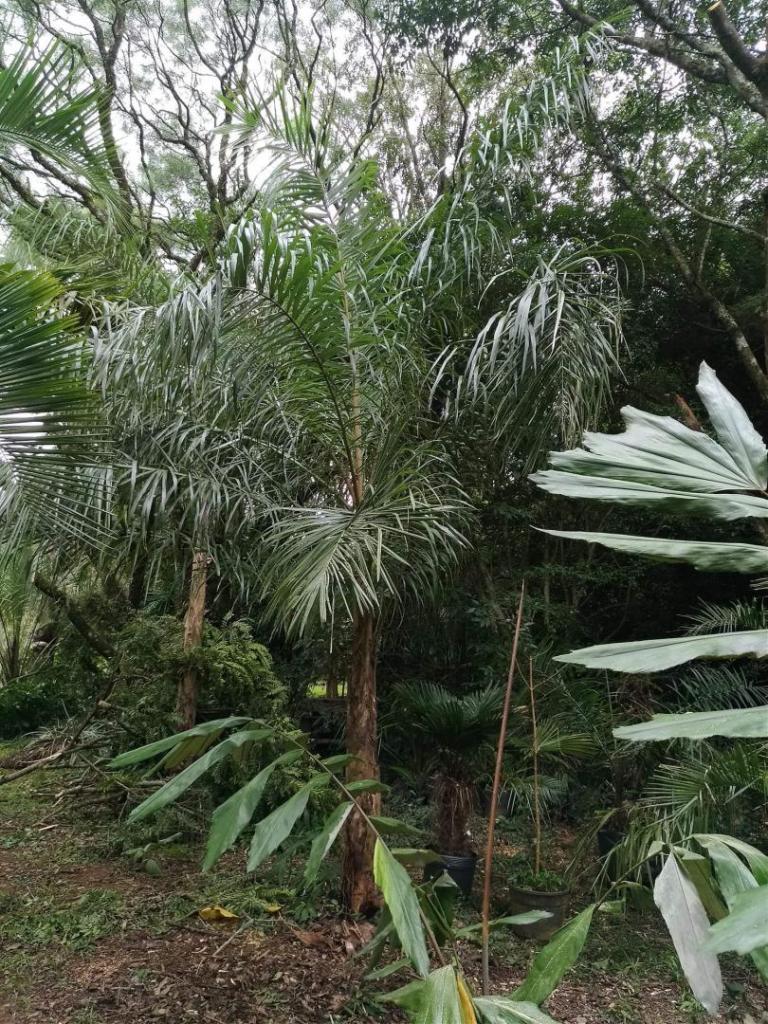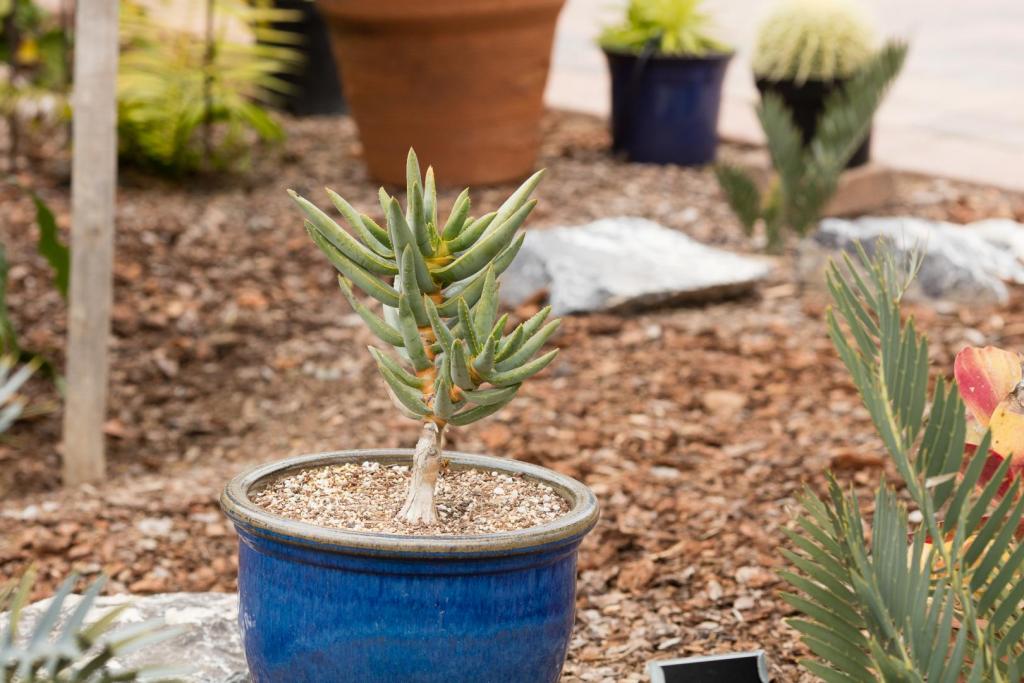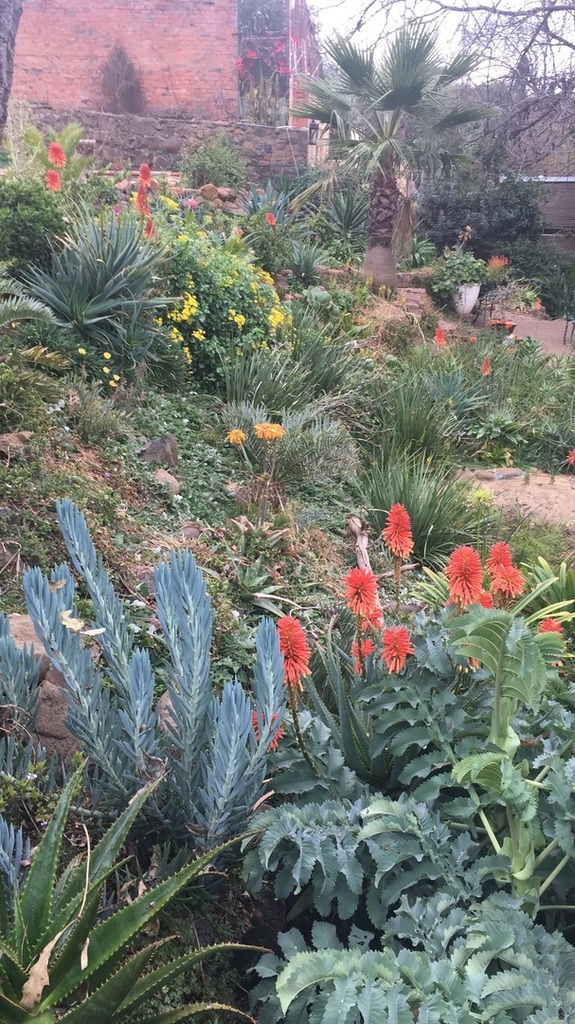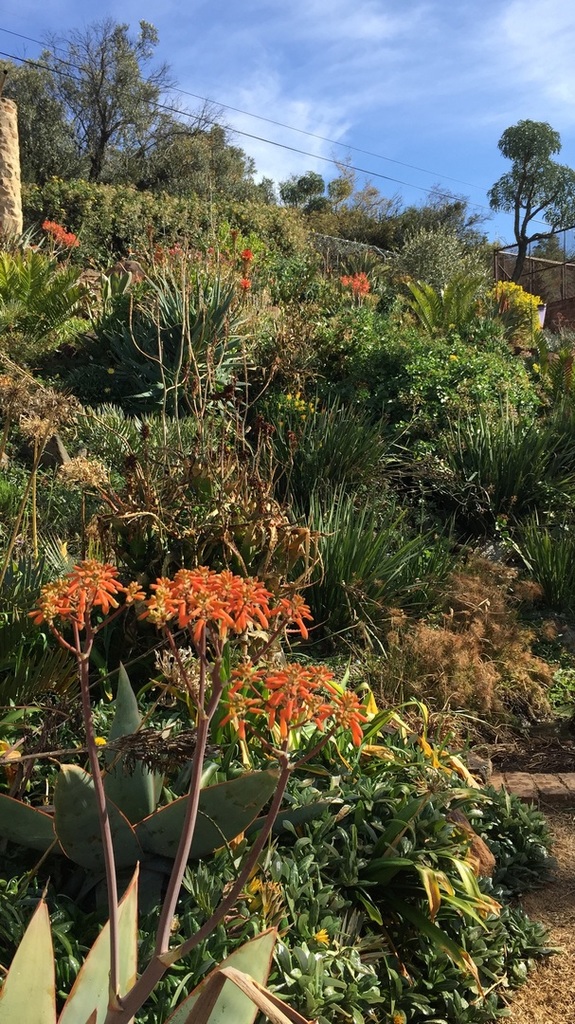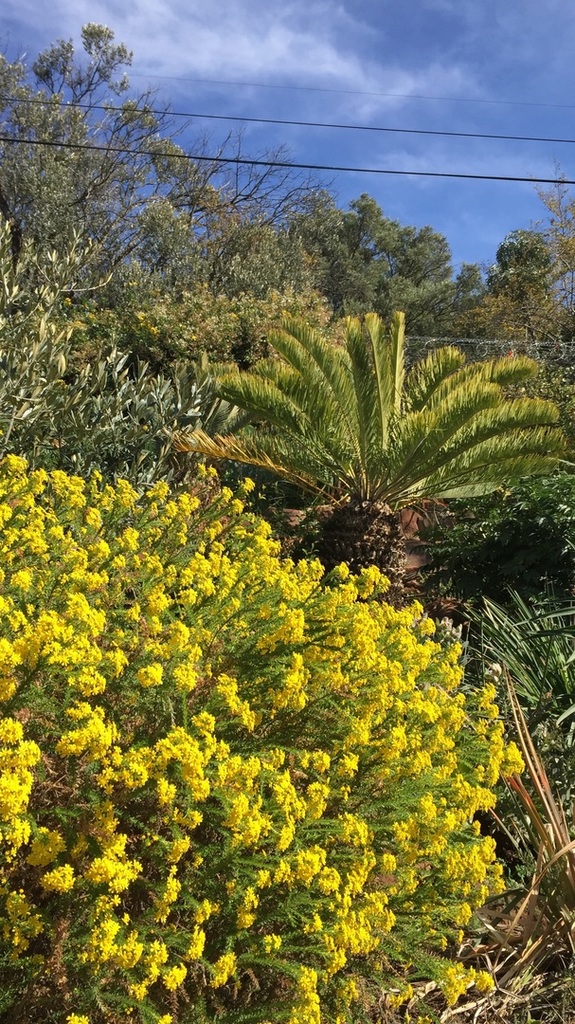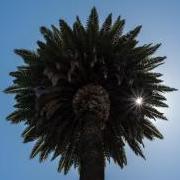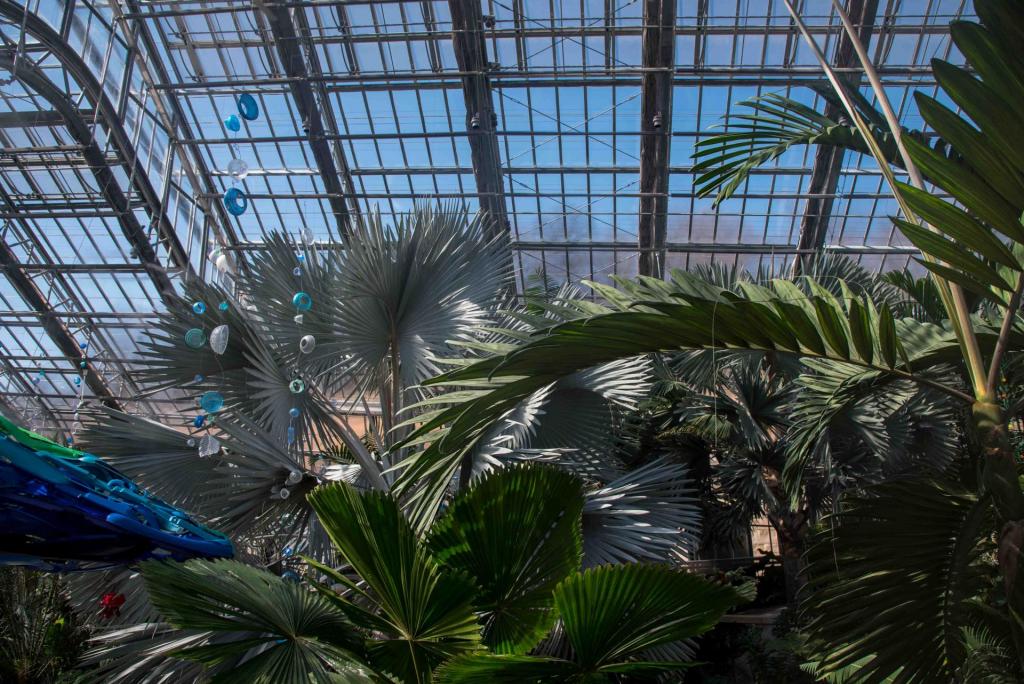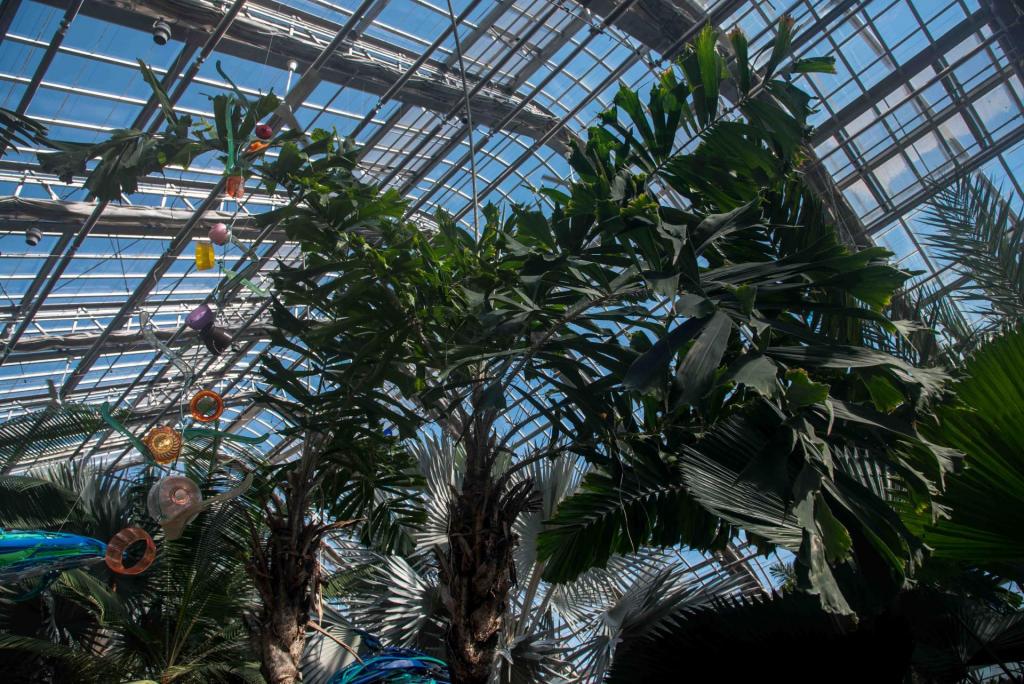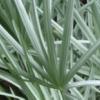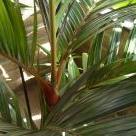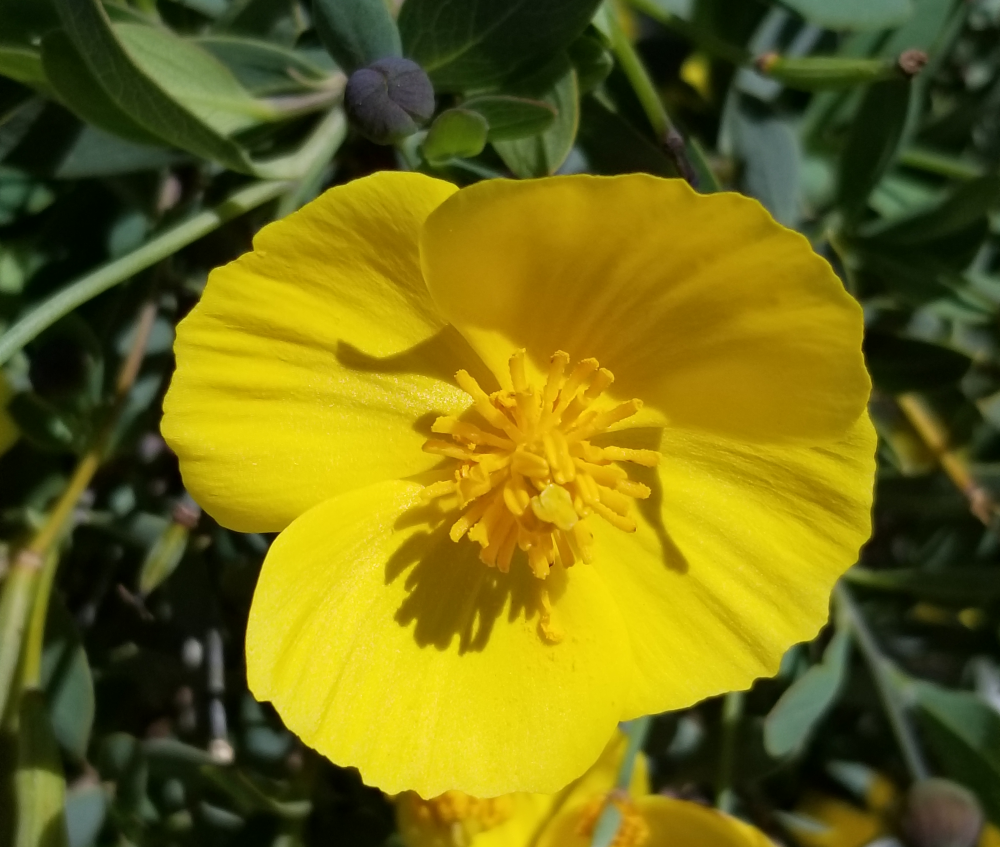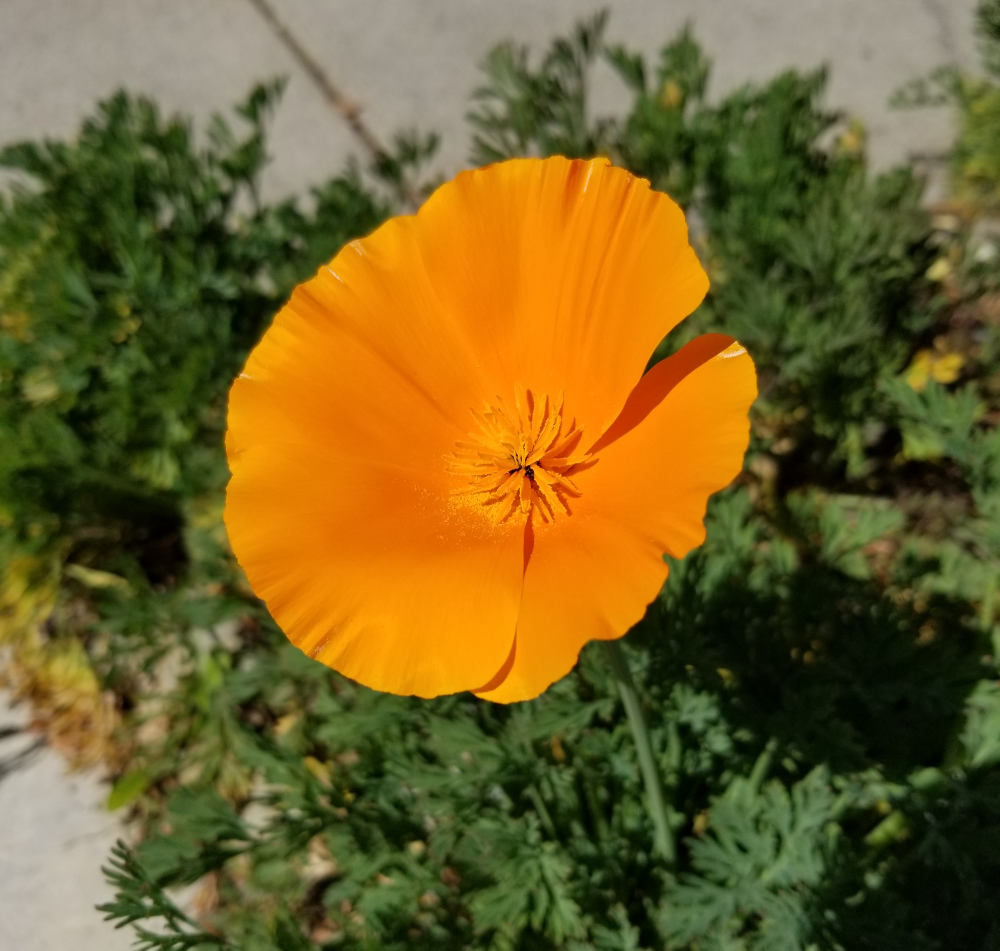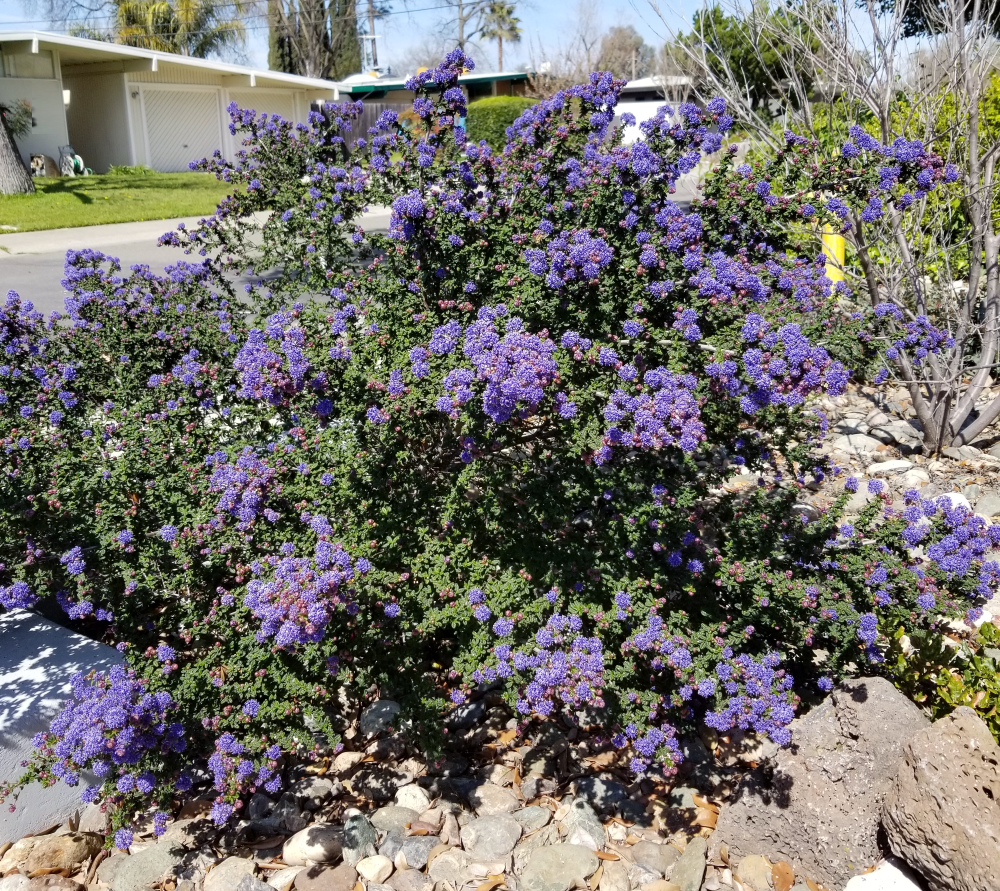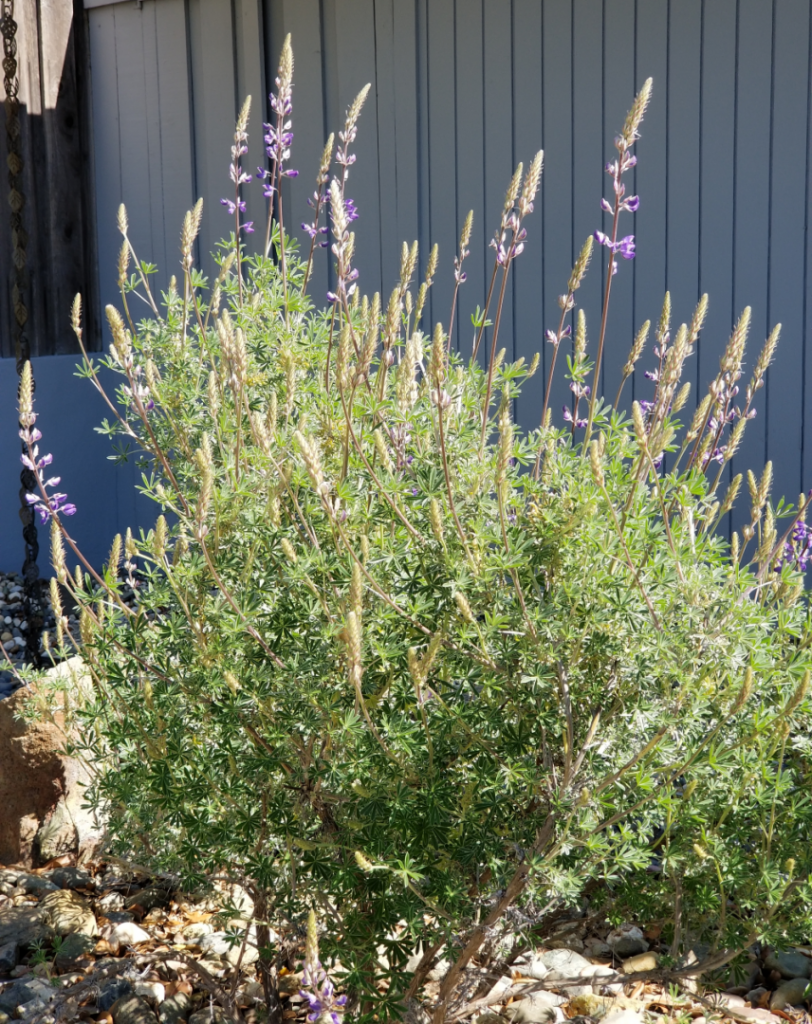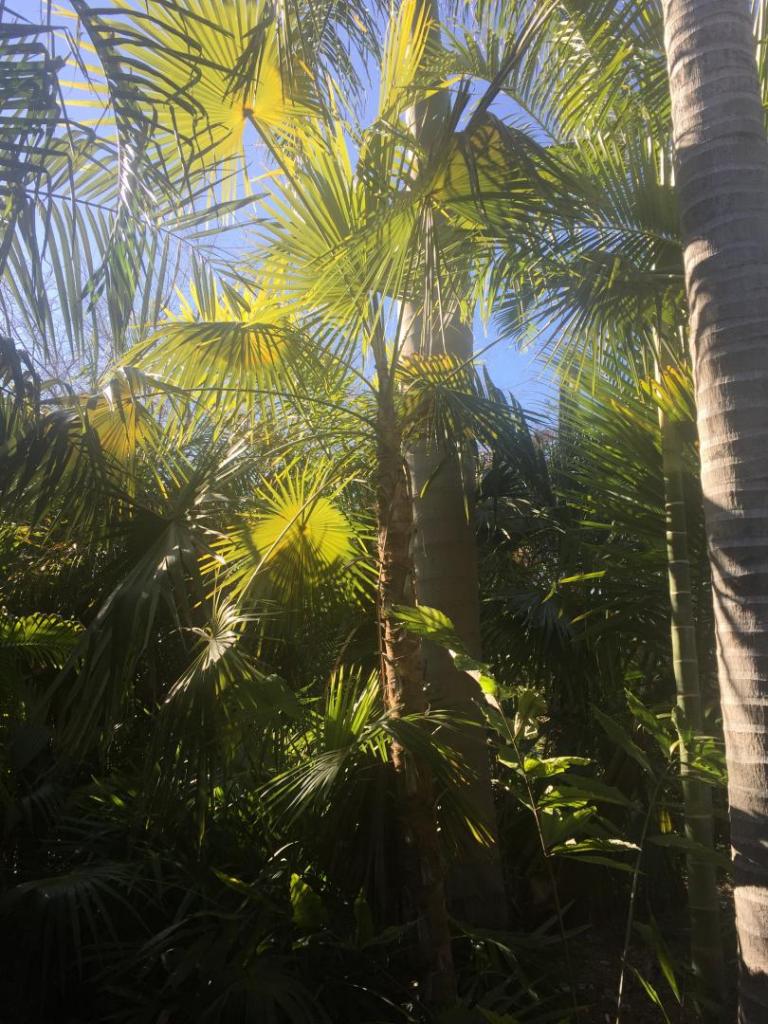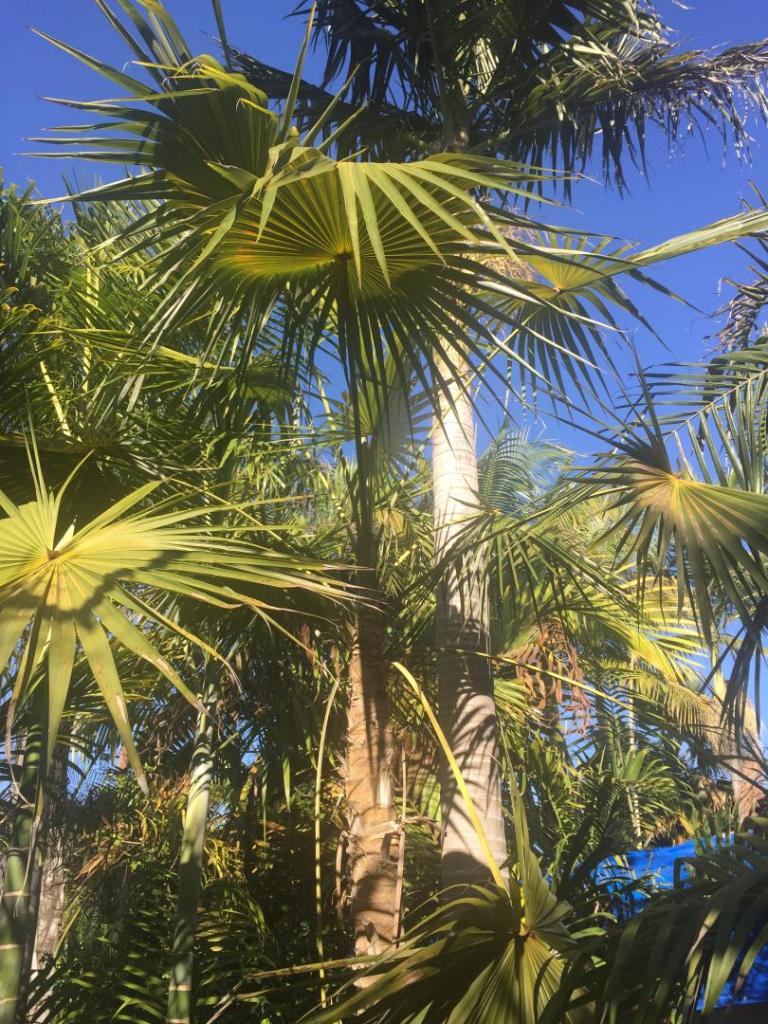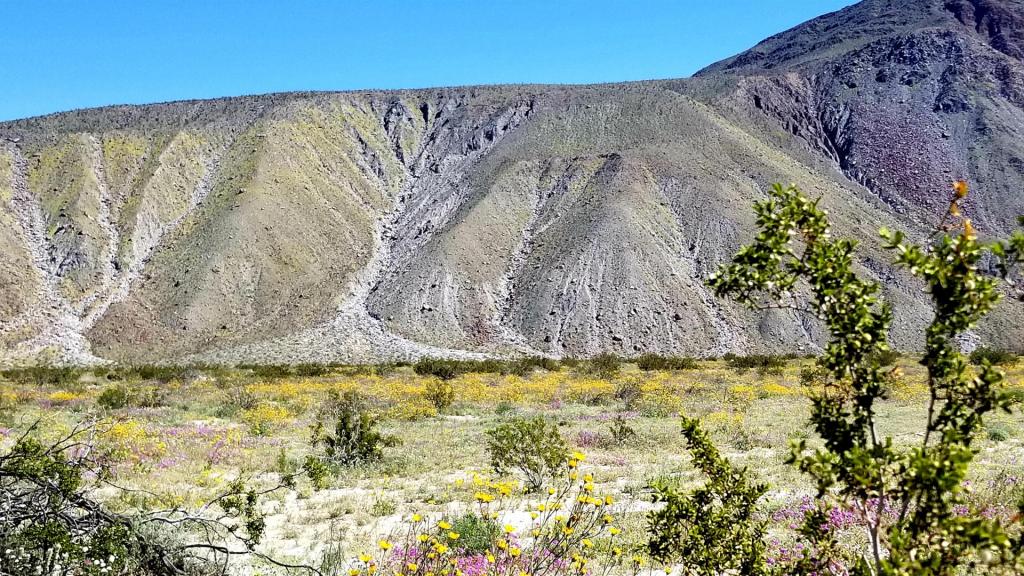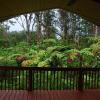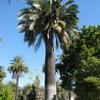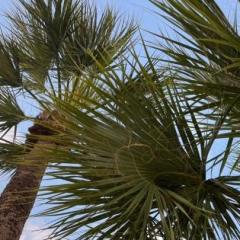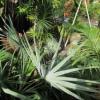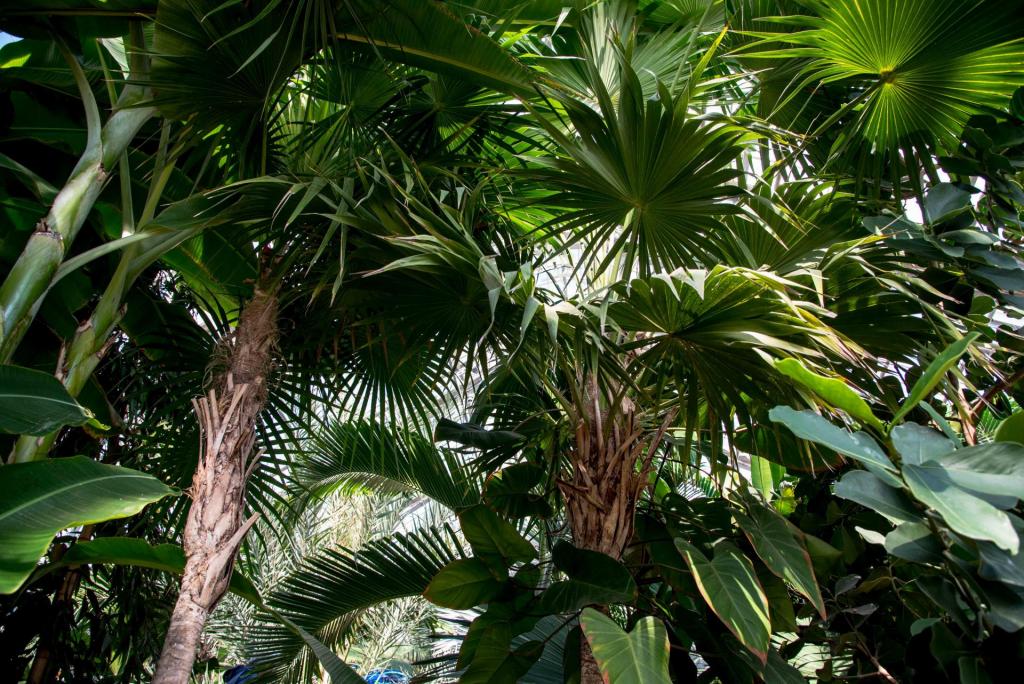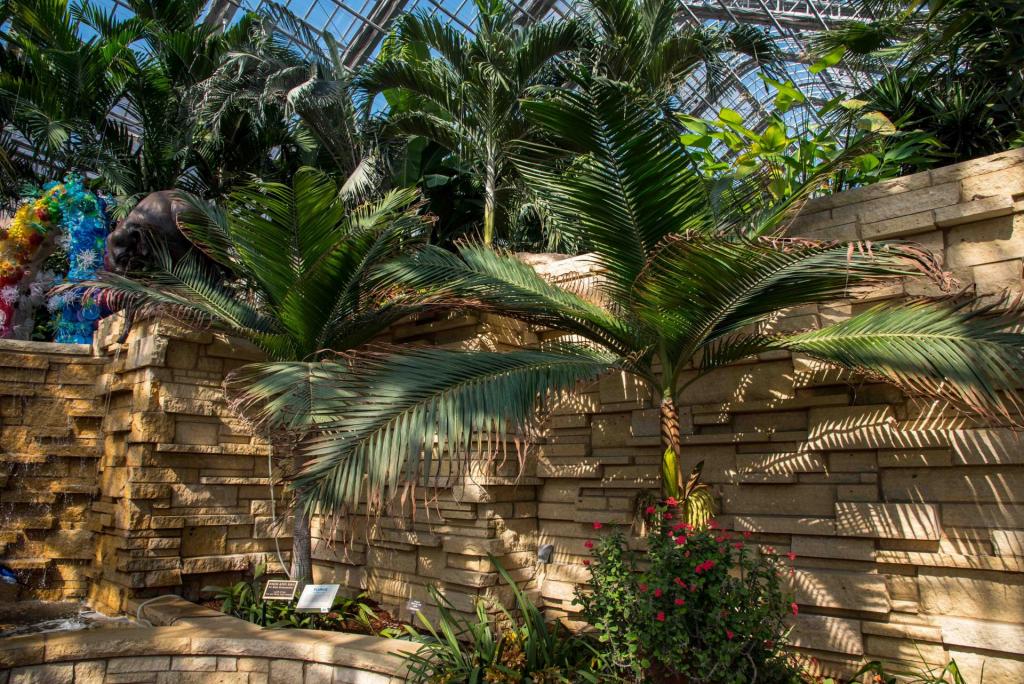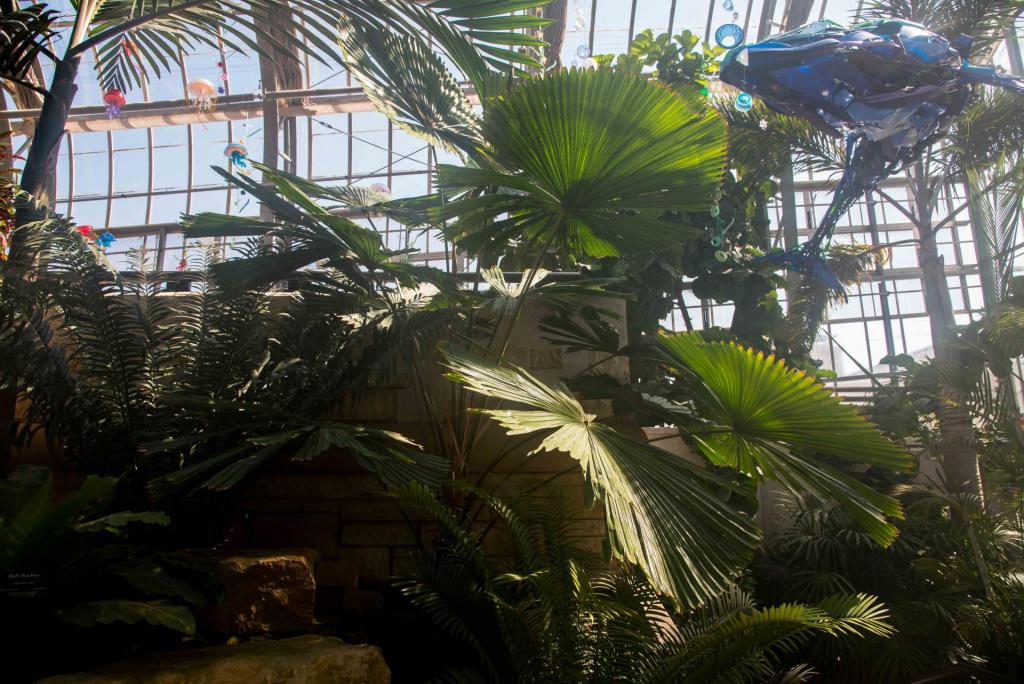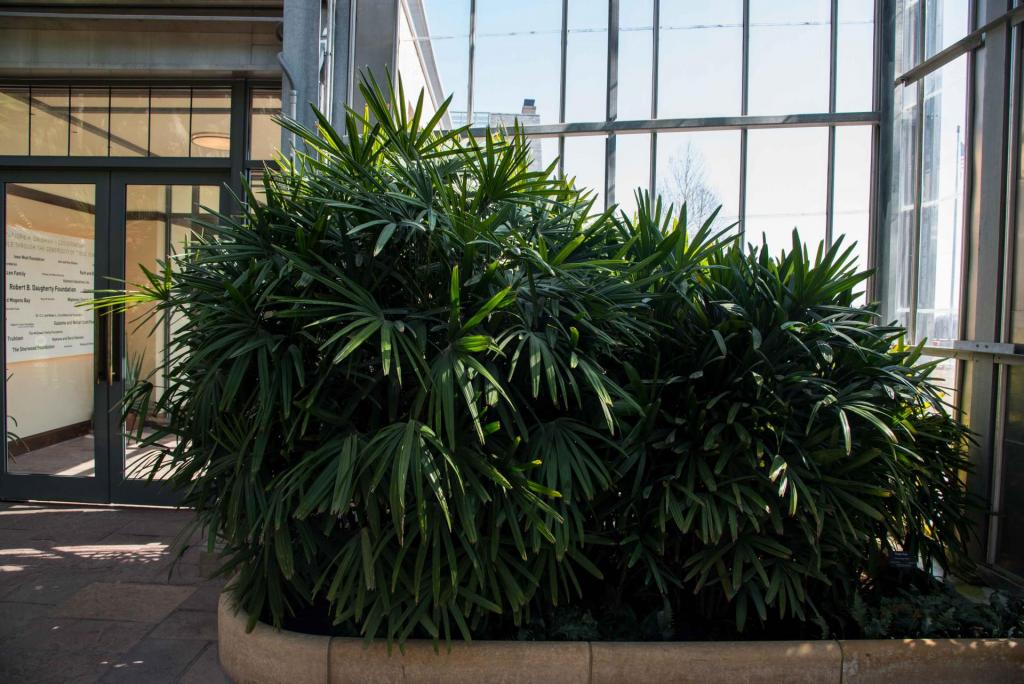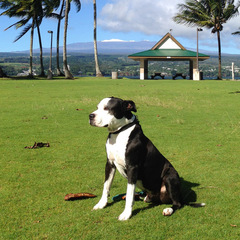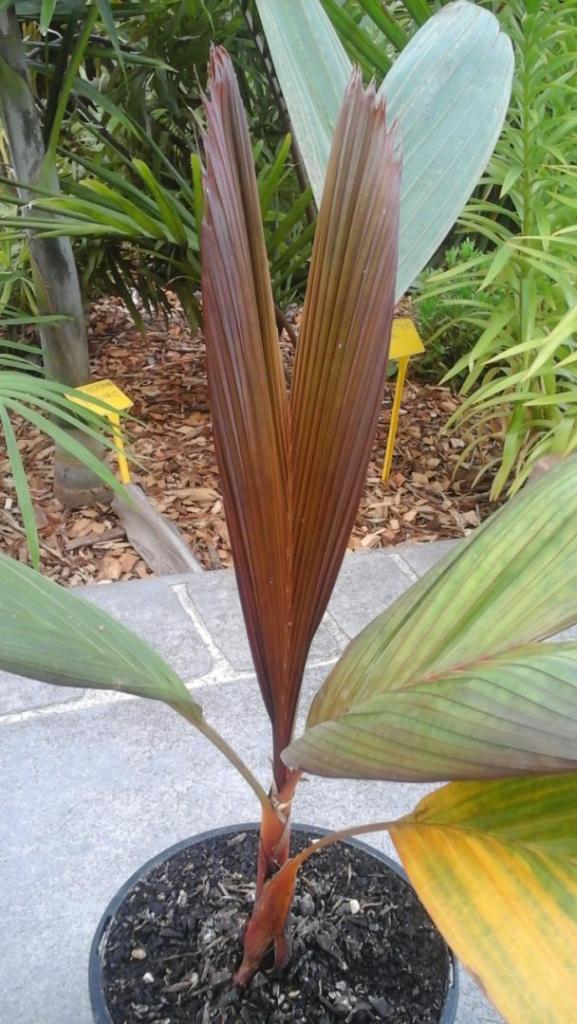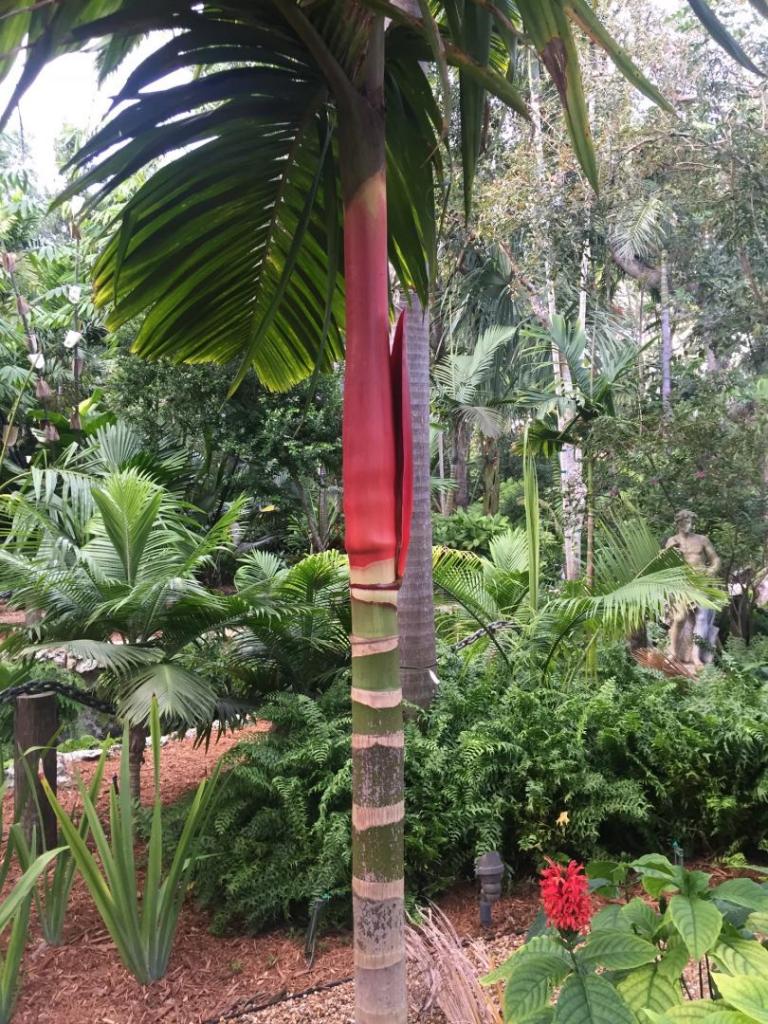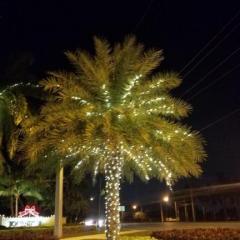Leaderboard
Popular Content
Showing content with the highest reputation on 03/17/2019 in all areas
-
It is not really a factor of "how many inches of (yearly) rainfall" you need. (I assume you mean yearly rainfall) It is more a factor (IMO) of how evenly throughout the year it rains. Example: I get about 60 inches/yr. here in Kona mauka. If that worked out to be 5 inches a month, spaced out to 2.5 inches every two weeks - I would be golden. But some years that might mean 10 inches in Aug and another 10 inches in Sept. while getting close to zero in Jan. and Feb. And since 60 inches is an average, I may get 30 inches in a super bad year, and 90 in a wet year. So, you really have to figure out your worst case scenario in your driest months - not yearly average. A month without rain in Hawaii and things start to suffer. Two months (or less) without any rain and some "water loving," smaller understory, or not yet fully established palms/plants, start dying. So you may only use your irrigation a few times a year, but it may end up saving your garden. Of course if you have a smaller garden and water is available, you can always resort to hoses and sprinklers - provided you are around (don't depend on a house sitter). For me (3 acres), there is usually once or twice a year were I would be screwed without my irrigation system. And I can put it on auto and leave town without worry.5 points
-
3 points
-
2 points
-
Well, speaking of coconuts, as a matter of fact, meine Frau is in Vallarta, Mexico, taking a break. She sent this pic to me: A mature coconut seed. If the shoot appears, I will replace one of the five I have in the garden for this one. This means a lot to me. She was not very interested in C. nucifera. She said she picked a dwarf, but is not aware of its parent's color. Seems (I pray) she can keep it as checked baggage on here return flight to TJ... Let's see what happens...2 points
-
@Loxahatchee Adam Not surprised about using Excel, I read somewhere on social media recently, that practically all enterprise level software is effectively competing with Excel. That's true enough to make me chuckle at least a little bit. In general, I think there is demand for a decent, easy to use, and inexpensive software system for tracking collections. I think when you are growing plants at scale, especially rare and difficult to grow ones, there can be tremendous energy expended on getting things just right. Serious hobbyist, non-commercial growers know what I'm talking about. Like, if you somehow procure a single fresh seed of a Pelagodoxa, for example, you might invest hours reading up on cultural techniques and climatic requirements. You really want this thing to survive! Botanical gardens are on a similar mission, though at a much larger scale with far greater resources. Among their primary goals is--or should be, plant conservation. Getting things just right is also at the top of their list. To say nothing of the importance of scientific research. Then there are nurserymen and "ego" hobbyists/collectors. There are definitely exceptions, but I can also see how this thread may seem silly and unnecessary to them. Their motivations and incentives are simply different. And that's fine too. (By the way, in no way am I suggesting that nurserymen are also ego-drenched, plant snobs. The latter is a very distinct and independent species.) So yeah, in short, I think I'm going to build this thing. It may take me a year or so, but I think I'll get started. I'll keep anyone interested in the loop. Thanks everyone, great thread!2 points
-
2 points
-
2 points
-
2 points
-
@pj_orlando_z9b Sad that we are seeing this across the I-4 corridor and the state, but it is a reality we all have to deal with now. Some of the Phoenix palms are on their 3rd and 4th try in the same spot. Using palms resistant to the disease is one thing our city government has done right. Hopefully, more localities will accept reality and move forward with a better beautification plan. how many of these commercial palms receive proper fertilization and safe pruning practices? If I were a betting man, I'd put my money on none or very few, especially in the area of safe pruning.2 points
-
2 points
-
Aloidendron ramosissimum formerly known as Aloe ramosissma. This seemed to have a nice growth spurt after I purchased it last winter, and has again picked up as we are in winter again. When I came across this in a 1 gallon, I just couldn't resist adding it as a container plant to my garden. I think this will remain manageable as a container plant unlike many of its much larger cousins in the Aloidendron genus. If you are growing this species, please share photos of what mine will eventually grow into. It was some much larger specimens that made me jump on the opportunity to get this little one.1 point
-
1 point
-
My garden is situated against an East facing slope of Grant's Hill in Bloemfontein, South Africa. Bloemfontein has hot dry summers (summer rainfall) and cold winters down to -10 degrees Celsius. My garden's microclimate is more a 9b though. My lowest temperature this past winter was -0.9 degrees Celsius. The flat ( lower lying areas) recorded -9 degrees Celsius. I moved into this house about 3 and a half years ago. The beginnings of the garden was cleaning up and eradicating alien invasive species and weeds. I started in the back and concentrated on South African indigenous plants. Now that that is settled I'm starting to add palms. The front and sides are now only starting with cleanup and planting in some areas. i have 33 palm species thus far. Herewith some pictures. I'll add as the summer and the garden progresses. These three pics are of the back garden planted with SA plants:1 point
-
1 point
-
I took this pic last month near Lake Pontchartrain west of New Orleans. Height is about 12 feet. Trunk is about 8' including crown. There are some I think even bigger in the vicinity but hard to get to in the swamp. There used to be one on Bayou Savauge NWR in New Orleans East that must have been about 14 feet tall but it was destroyed in Hurricane Katrina. I wish I still had a picture of it.1 point
-
I am growing CIDP, Dacty, Sylvestris and Theophrasti in my garden. The Sylvestris is certainly the fastest growing of the 4 types and is a rocket during the warmer, summer months. Growing about 3 x as fast as the CIDP and 5 x as fast as the Dacty & Theo. But growth almost totally stops on all the Phoenix's from December - March here. Sylvestris is also very good at handling wet cold in my climate and a 4 foot specimen survived 12F unprotected the previous winter, with quite a bit of snow. Damage was minimal with just minor bronzing to frond tips. It was a similar story with the Dacty. But one of my two CIDP's were defoliated. Theophrasti had quite a bit more bronzing to it's fronds, but kept its spear. Both Dacty and Sylvestris however suffered problems with wet soil and excessive rainfall during the wet spring period. Both had disease/necrosis damage to the fronds last April after 1-2 weeks of continuous rain. CIDP and Theophrasti did not suffer from this problem.1 point
-
I remember seeing at least one person on here, possibly two people, from Washington/Oregon, saying they had something like 5F and 8F lows on back to back nights. With daytime highs of like 28F. They may possibly have been from the Olympia area. And that was in conjunction of like 10 days straight with snow cover. My point is that no Phoenix species is going to survive that. Although it seems you have a bit a microclimate which certainly help you in your location. My low this year was only 2F more than you at 21F. Although I didn't experience any measurable snowfall this winter. There is no damage to any of my Phoenix's (CIDP, Dacty, Sylvestris & Theophrast). One of my Butia's has suffered bad this winter though, from something. Possibly wet/cold.1 point
-
"He lived, since the mid-seventies, on an abandoned pineapple plantation, in Hawaii, which he bought barren and turned, row upon row, into a lush forest of palm trees. Friends who have visited have come back changed." The story on the late American poet is at the New Yorker. Paywall, of course.1 point
-
1 point
-
Spring Wildflowers: I took a (very) short hike to my front yard for these pictures of what's in bloom today: Dendromecon harfordii (Channel Island Bush Poppy), Eschscholzia californica (California poppy, Ceanothus "Julia Phelps" and Lupinus albifrons. Happy to report the Ceanothus was being mobbed by honeybees. Some of my other front yard natives aren't in bloom yet, but the "show" is staggered and takes place over the next few months. I'm trying to encourage my neighbors to try some in their own front yards, esp. those who've removed their lawns.1 point
-
1 point
-
We visited Borrego Springs State Park yesterday and there was some very nice flower color due to the recent rains. I was surprised at the large amount of visitors! All the more accessible trails and parking areas were packed, e.g. Palm Canyon, Hellhole Canyon, etc. The town, e.g. Christmas Circle area, was also packed. Glad we got there early! Out towards Coyote Creek (pictures below), the crowds thinned out a bit.1 point
-
They handle sun a lot more than I thought they would have. I have an old one planted out many years ago, that in retrospect is in way too much shade. It is now too big to move. Ironically, I actually planted out a smallish 1gl 3 weeks ago in FULL sun because a friend of mine and I were disagreeing on this very topic and I had a 1gl just laying around. It's going with no protection albeit March, and it appears again I will be proven wrong. I thought it would have fried already. If I were in your situation, I would place one of the 3gl potted plants in a sunnier location (or pot plant it) and check on it often, especially 1st few days of real sun. If it looks fine after a couple of weeks of sun, then plant them out. If it starts to show sun damage retreat it to a shadier spot, or put up protection. LOVES water here, Florida shouldn't have a problem with that, and it'll love your humidity. I would listen to Jeff Searle on this one. If anyone would know, it will be him. Beautiful Palm !! Please post pictures once planted.... or situated.1 point
-
Totally agree with Dean. A good example being the old Sullivan garden in Kapoho, later purchased by Mark Frost and sadly lost to the 2018 lava flow. Terry Sullivan installed a very elaborate irrigation system at their 11 acres, despite the fact that average annual rainfall is between 80 and 90 inches. Problem being that Kapoho is hot, sunny and quite windy and at times there's no rain for several weeks and during that time pretty much everything dries out - unless you have irrigation.1 point
-
1 point
-
You're too humble, Kinzy. We up here @ 32 degrees haven't given up hope. You're no slouch yourself! Your cocos are making us folks do a double take.1 point
-
1 point
-
It looks like this plant was planted too deep and that the tap root is actually part of the trunk. I have grown several dragon trees and they typically send many lateral roots out near soil level. I would expect if you dug down further you would find many lateral roots emerging from about the same area.1 point
-
I think at this size, this time of the year I would plant these in full sun. Jeff1 point
-
Next week when I head back down to Kure Beach, I hope to find seeds of potential native Sabal palmettos that I will compare with seeds from BHI. After I have undeniable proof that Sabal palmetto is native to New Hanover County, I would like to figure out how to conserve and restore North Carolina's Sabal palmetto populations in that county and possibly elsewhere.1 point
-
I have two watering cans (plastic) that have a screwable rose (the nozzle) so it doesn't disrupt the soil. But, mostly, I fill the tray (these are houseplants) with the plant in it and let capillary action water it, and then transfer to another tray and tip it up so it can drain, and then put in a dry tray. I have found that by pouring water over plant, there can be dry spots, and this way, everything gets wet. Its a hassle, but works for me. BTW, good luck trying to find a rose that screws off, so, I am really careful not to lose them. I also use soluble palm food for this method. Cecile.1 point
-
1 point
-
Seeing this across Orlando too. Some of the Phoenix palms are on their 3rd and 4th try in the same spot. I wonder though the role in proper maintenance too...how many of these commercial palms receive proper fertilization and safe pruning practices?1 point
-
1 point
-
I looked into software several years ago to keep track of everything I've been planting here...palms...trees...other stuff. I've been keeping track of everything in a big Excel file that has served its purpose, but has nowhere near the functionality that I want long term. BG-base is what botanical places have used for years, but I've run a trial version of it and it's a dinosaur program that makes you feel like you're stuck in 1995 on the verge of MS DOS and Windows 95. When I looked at Iris BG 4 or so years ago, what really drew me in were the mapping and mobile capabilities. My biggest problem (and one that I'm sure others have also) is getting behind on updating and forgetting info. If I could update as I'm receiving and planting items, it would great.....along with adding GPS data. I also wanted to be able to take planting pictures, future growth pics, flowering pics, etc. I have lots of phone pictures, but I wanted them matched to the individual accessions. The biggest problem back then was the mobile required you to go on eBay or somewhere and find a dinosaur Windows CE phone to run their software on. To me this was useless. They now have iOS and Android apps, though I haven't looked into how well these integrate with the base program. What I ended up using for a short time was PIRS - Plant Information Record System - which is based in FileMaker. For what you're looking for, this may be one of the best options. http://www.botanicaltech.com/ http://www.botanicaltech.com/databases.html It takes some getting used to, as all programs do. I needed to change a number of fields in it to suit the needs here better. An issue I had was that with photos, they were attached to species. So if you have several different accessions of the same species, the pictures were all attached to all of them. To me, this seemed silly, as I don't want just an example photo, but rather that of individuals. There are mobile versions of FileMaker that can be linked up, but it is not a simple process. For computer based database, spray logs, potting up, etc....it may be the best solution for you. The database itself is distributed free of charge, but you need to purchase FileMaker. I personally have gone back to my Excel file for now, as it's much faster for me to put in a list of things. I think inevitably I will go to Iris BG, but there is a big $$$ cost upfront and recurring annual maintenance $$$. I really want the integrated mapping and image capabilities and future ability to have the maps online. Most of the 2014 plantings have printed labels with QR codes on them that link to info pages. When we have horse show events here, it would be awesome to have everything openly available.1 point
-
1 point
-
Are we keeping it a secret on it's location? I'm not understanding why. Time? And I assume were having an auction of plants that would further encourage people to come. How many plants can one bring for the auction? Who's organizing the food and drinks? In another words, who's in charge? Lol1 point
-
1 point
-
Truly fascinating stuff, but China was never part of the Russian empire. (Map #6 above, "Russia, by the 18th century etc.).1 point
-
1 point
-
1 point
-
1 point
-
1 point
-
1 point
-
1 point
-
1 point
-
1 point
-
1 point
-
They're one of the most prolific weed trees here and take over other plantings. So, do like PalmTreeDude suggested. Next time you're down in S FL take a 5 gallon bucket of seed back and throw them anywhere you want. If conditions would be acceptable for survival they'll grow. Gotta neighbor ya don't like? Toss seeds randomly about their yard in their garden beds, along fences, and anywhere else the mower won't hit them. A weed wacker won't kill them, they laugh at the common big box available concentrations of Round up & other plant killers. They're very hard to pull up once they're beyond strap leaves and require a shovel (or saw) to remove. Thankfully none of my neighbors have them, and the ones I grow I take elsewhere to plant in areas I want to "naturalize" way before they produce seed.1 point
-
1 point


